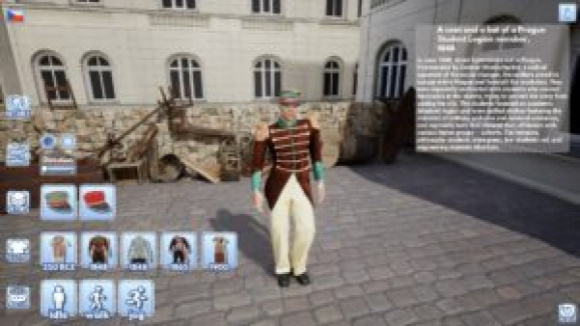Prague, 31 January 2024. To propose a procedure for advanced digitisation and presentation of textile items and to test this method on historical garments from the collection of the Museum of the City of Prague. This was the goal of the Virtual Digital Wardrobe project, the successful completion of which was announced by the CESNET association, the Museum of the City of Prague, the Faculty of Electrical Engineering of the Czech Technical University and the company Importech. Joint work took place from July 2021 up until last December.
“The results are essential for documenting the condition of valuable textile collections in museums, which suffer from physical handling and natural ageing, but also for presenting textile exhibits to researchers and the general public,” says Dr Sven Ubik from CESNET.
The main output of the project are sophisticated 3D models of selected textiles. Moreover, the solvers were not merely satisfied with the static objects themselves, they put the individual models into motion. The proposed process has been tested on a valuable collection of 19th century Prague residents’ clothing in the collection of the Museum of the City of Prague. The resulting presentation makes it possible to see valuable historical garments in motion, which would otherwise not have been possible.
Visitors to the exhibition From Prehistory to the Tailcoat, organised by the Museum of the City of Prague in the U Zlatého prstenu building, can see what digital moving replicas of textile objects look like. They can even virtually put the replicas on using a scanning camera and large-format monitor via an interactive digital kiosk connected to the Internet.
“The kiosks are connected to a virtual server in the CESNET infrastructure where the 3D models are stored. This allows us to continuously update the content of the digital kiosks, add more models and monitor their correct operation,” adds Sven Ubik.
The digitisation and presentation method developed within the Virtual Digital Wardrobe project will be applicable to other valuable textile collections. Both researchers and museum visitors will benefit from it and it will also find applications in the textile industry.
Examples of digitised objects created by CESNET experts are available at https://modely.cesnet.cz/cz/.
A detailed technical description of the process for creating digital replicas and their presentation will be available in technical articles in the Journal of Cultural Heritage and IEEE Access.

The Virtual Digital Wardrobe project is co-financed with state support from the Technology Agency of the Czech Republic under the ÉTA programme (project number TL05000298).

